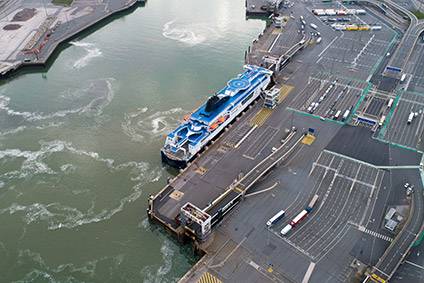
France has issued guidelines for British exporters of animal and plant-based products related to border controls and certification should the UK exit the European Union with a no-deal Brexit in October.
The guide covering phytosanitary and sanitary controls applies to products of animal origin such as meat and dairy, livestock, animal feed, plants, and items of animal origin not intended for human consumption. They were issued by France’s Ministry of Agriculture and Food.
Border checks in France will involve a three-stage process: the document check, a goods identity check, and a physical inspection.
The first stage will involve verification of the information shown on a “health or phytosanitary certificate” and other documents such as the invoice, delivery slip or consignment note.
The identity check will entail verification the batch of goods matches the information shown on the health or phytosanitary certificate. The ministry noted: “This check is systematic for livestock and products of animal origin; it is randomised for other goods; [and] it is more or less detailed according to the level of risk.”
Checks will involve the verification of seals and labelling, and the package count, for example.

US Tariffs are shifting - will you react or anticipate?
Don’t let policy changes catch you off guard. Stay proactive with real-time data and expert analysis.
By GlobalDataThe ministry continued with respect to the physical inspection: “This is systematic for livestock; it is randomised for products; its frequency varies according to [the] sector; [and] it is more or less detailed according to the level of risk.” Such procedures will entail temperature measurement and sampling for testing.
In March, the ministry issued a similar guide to ensure UK exporters to France have made the necessary preparations before the goods leave Britain.
They need to make sure they have the sanitary/phytosanitary certificate from the relevant UK authorities and make sure the details match. The certificate also needs to be registered in the “EU Traces system” and must accompany the goods.
A commercial seal must be placed on the trailer shipping the goods along with the sanitary/phytosanitary certificate number.
To complete customs formalities, exporters have to enter a “pre-lodged declaration in the “DELT@ customs system” before the goods leave the UK.
And for “sanitary pre-notification”, data relating to the goods must be entered in the EU Traces system at the time of departure, with a scanned copy of the sanitary or phytosanitary certificate attached.
On arrival at the border post, the first stop is the veterinary and Phytosanitary Inspection Service (SIveP) where the related certificates from the UK authorities are submitted. Trailers will then have to be opened at the inspection bay for an “in-depth identity check and physical inspection”.
Then, once the control procedures have been completed, the sanitary and phytosanitary controls (SPS) document needs to be obtained from the SiveP officer according to the nature of goods: the Common Veterinary Entry Document (CVED), the Common Health Entry Document (CHED), or the Common Entry Document (CED).
Only then can the customs formalities be completed with the submission of a “pre-lodged declaration for acceptance”.
Finally, a wait may be required before the customs’ officer releases the goods.



